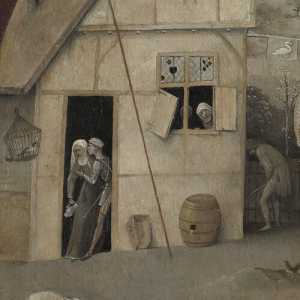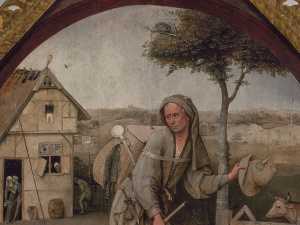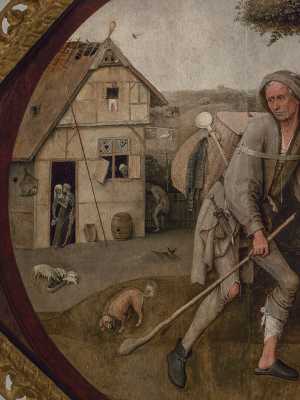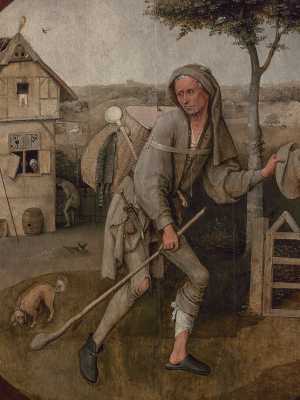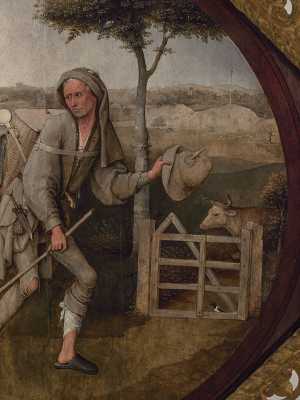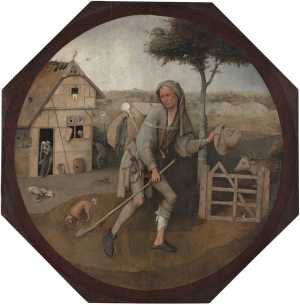This vagabond or pedlar with mismatched shoes is symbolic of man on his path through life. He is a kind of 'Everyman' a popular late 15th century moral tale. He represents the 'homo viator', the pilgrim who goes through life weighed down by the baggage of his earthly existence. He suffers his lot along a path full of temptations.

Specifications
| Title | The Pedlar |
|---|---|
| Material and technique | Oil on panel |
| Object type |
Painting
> Painting
> Two-dimensional object
> Art object
|
| Location | This object is in storage |
| Dimensions |
Height 71 cm Length 70,6 cm |
|---|---|
| Artists |
Painter:
Jheronimus Bosch
|
| Accession number | 1079 (OK) |
| Credits | Purchased with the support of Rembrandt Association, D.G. van Beuningen, F.W. Koenings and J.P. van der Schilden, 1931 |
| Department | Old Masters |
| Acquisition date | 1931 |
| Creation date | in circa 1500 |
| Internal exhibitions |
Van Eyck tot Bruegel (1994) The Collection Enriched (2011) De ontdekking van het dagelijks leven - van Bosch tot Bruegel (2015) De collectie als tijdmachine (2017) BABEL - Oude meesters terug uit Japan / Old Masters Back from Japan (2018) Lievelingen (2024) Omkijken (2025) |
| External exhibitions |
Jheronimus Bosch – Visioenen van een genie (2016) Museum Boijmans Van Beuningen @ Rijksmuseum (2023) Figures du Fou. Entre Moyen Age et Renaissance (2024) Collection of Museum Boijmans Van Beuningen – Bruegel’s ‘The Tower of Babel’ and Great 16th Century Masters (2017) |
| Research |
Show research Alma |
| Material | |
| Object | |
| Geographical origin | Northern Netherlands > The Netherlands > Western Europe > Europe |
All about the artist
Jheronimus Bosch
Den Bosch circa 1450 - Den Bosch 1516
Jeroen Bosch was probably born around 1450 in Den Bosch as Jheronimus van Aken. When his fame as artist had spread throughout Europe, he adopted the name of the...
Bekijk het volledige profiel






